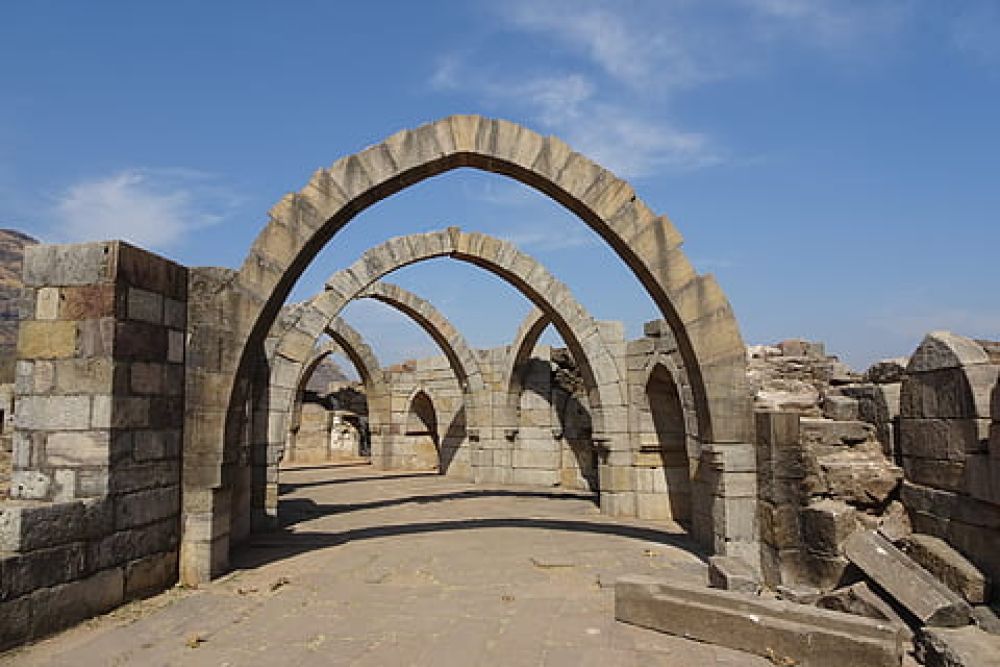

Champaner-Pavagadh Archaeological Park, a UNESCO World Heritage Site, is a historical treasure located in Gujarat, India. It encompasses an ancient city full of mythological and historical significance, including the remarkable structure known as Sat Kaman. The historical park boasts a landscape dotted with unexcavated archaeological, cultural, and living heritage sites that span from the prehistoric and medieval periods.
Sat Kaman, which translates to 'seven arches', is a prominent structure that is part of the extensive Champaner heritage area. These arches are located on the Pavagadh Hill and are believed to be remnants of a military structure or possibly a granary. Their impeccable symmetry and architectural mastery represent the blend of Hindu and Islamic styles that is characteristic of the region's unique heritage. Although originally consisting of ten arches, only seven remain today, thus giving the structure its name.
Tourism in Champaner, and by extension to Sat Kaman, began gaining momentum after the site was inscribed onto the UNESCO World Heritage list in 2004. This international recognition brought Champaner-Pavagadh to the forefront of historical destinations in India, sparking interest both nationally and internationally.
Recent tourism trends in the area have shifted towards sustainable and educational tourism. Visitors are increasingly seeking out the rich history and culture of the region, rather than just sightseeing. There has also been a growing interest in adventure tourism, with activities like trekking up Pavagadh Hill to reach Sat Kaman and other attractions.
Today, Sat Kaman continues to attract tourists who come to marvel at its historical relevance and architectural beauty. The best time to visit is from October to February, when the weather is most conducive to outdoor exploration.
Sat Kaman and Champaner are easily accessible from Vadodara, which is the nearest major city with an airport and railway station. Visitors can take a taxi or bus from Vadodara to reach Champaner-Pavagadh Archaeological Park.
Conservation efforts by the Archaeological Survey of India (ASI) and other organizations have played a vital role in maintaining the integrity of Sat Kaman and other ancient structures within the park. Ongoing archaeological studies and restorations are part of an effort to preserve Champaner's heritage for future generations.
As a significant historical site, it is important for visitors to engage in responsible tourism practices when visiting Sat Kaman. This includes respecting the site boundaries, not disturbing the local wildlife, and following guidelines set by heritage conservation efforts.
Sat Kaman stands as a testament to the rich cultural tapestry of Gujarat and the historical depth that India has to offer. Its integration into the landscape of Champaner-Pavagadh Archaeological Park makes it a must-visit destination for history buffs, architectural enthusiasts, and anyone interested in the confluence of nature and history. As a burgeoning tourist hotspot, Champaner and Sat Kaman remind us of the timeless stories etched into our world's geography, awaiting discovery and appreciation.